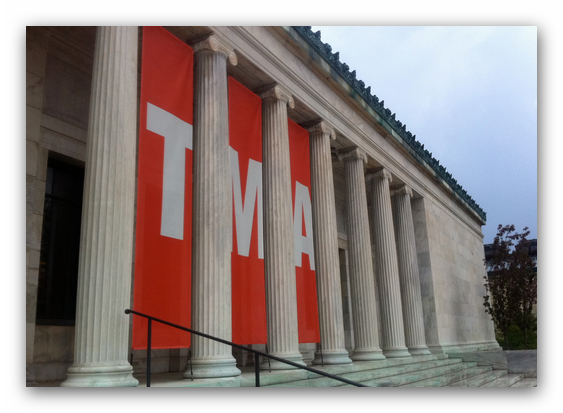Feb 10 2017 - May 14 2017
Toledo, OH
Kehinde Wiley is one of the leading American artists to emerge in the last decade and he has been ingeniously reworking the grand portraiture traditions. Since ancient times the portrait has been tied to the representation of power, and in European courts and churches, artists and their patrons developed a complex repository of postures and poses and refined a symbolic language. This language, woven into all aspects of a portrait, described the sitter’s influence and power, virtue and character, or profession. In his consideration of portrait traditions, Wiley has been especially drawn to the grand aristocratic portraits of the 18th century.
The artist began his first series of portraits in the early 2000s during a residency at the Studio Museum in Harlem. He set out to photograph and recast assertive and self-empowered young men from the neighborhood in the style and manner of traditional history painting. Since then he has also painted rap and sports stars but for the most part his attention has focused on ordinary men of color in their everyday clothes. Trained at Yale in the 1990s, Wiley was steeped in the discussions concerning identity politics during this decade and he brings his personal insights and theoretical studies to his practice.
Wiley’s portraits are highly stylized and staged, and draw attention to the dialectic between a history of aristocratic representation and the portrait as a statement of power and the individual’s sense of empowerment.
The works presented in Kehinde Wiley: A New Republic raise questions about race, gender, and the politics of representation by portraying contemporary African American men and women using the conventions of traditional European portraiture. The exhibition includes an overview of the artist’s prolific fourteen-year career and features sixty paintings and sculptures.
Through the process of “street casting,” Wiley invites individuals, often strangers he encounters on the street, to sit for portraits. In this collaborative process, the model chooses a reproduction of a painting from a book and reenacts the pose of the painting’s figure. By inviting the subjects to select a work of art, Wiley gives them a measure of control over the way they’re portrayed, allowing them to have a voice in the telling of their individual, unique story.
Credit: Exhibition overview from museum website
Whether you go or not, the exhibition catalog, Kehinde Wiley: A New Republic, is filled with reproductions of Kehinde Wiley's bold, colorful, and monumental work. The book encompasses the artist's various series of paintings as well as his sculptural work--which boldly explore ideas about race, power, and tradition. Celebrated for his classically styled paintings that depict African American men in heroic poses, Kehinde Wiley is among the expanding ranks of prominent black artists--such as Sanford Biggers, Yinka Shonibare, Mickalene Thomas, and Lynette Yiadom-Boakye--who are reworking art history and questioning its depictions of people of color.
Co-published with the Brooklyn Museum of Art for the major touring retrospective, this volume surveys Wiley's career from 2001 to the present. It includes early portraits of the men Wiley observed on Harlem's streets, and which laid the foundation for his acclaimed reworkings of Old Master paintings by Titian, van Dyke, Manet, and others, in which he replaces historical subjects with young African American men in contemporary attire: puffy jackets, sneakers, hoodies, and baseball caps. Also included is a generous selection from Wiley's ongoing World Stage project; several of his enormous Down paintings; striking male portrait busts in bronze; and examples from the artist's new series of stained glass windows. Accompanying the illustrations are essays that introduce readers to the arc of Wiley's career, its critical reception, and ongoing evolution.

